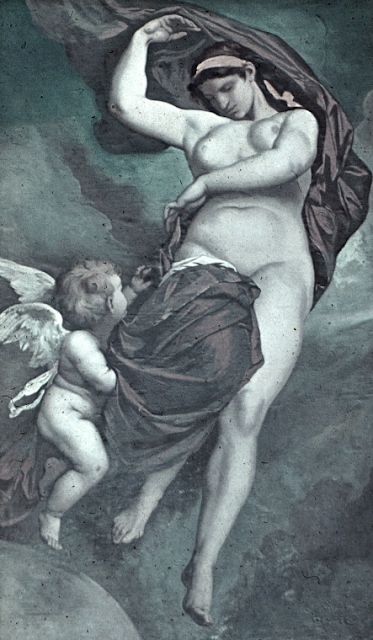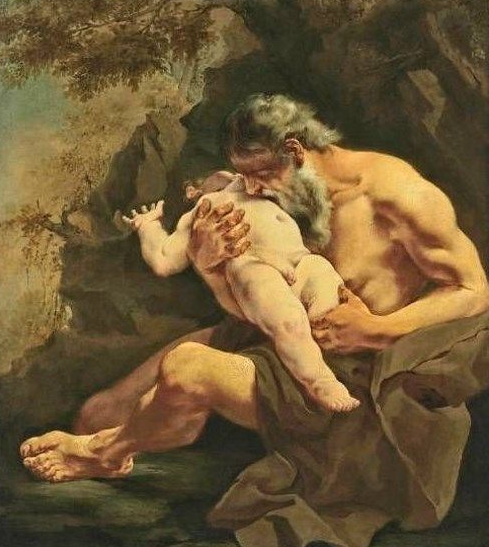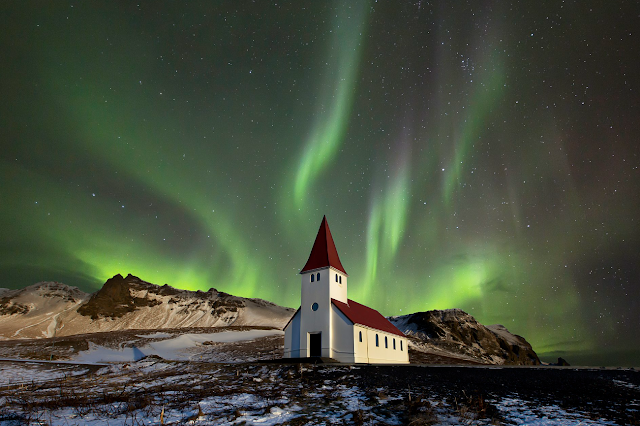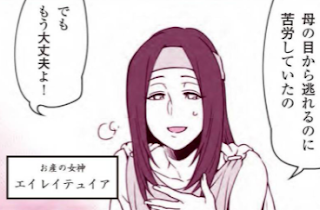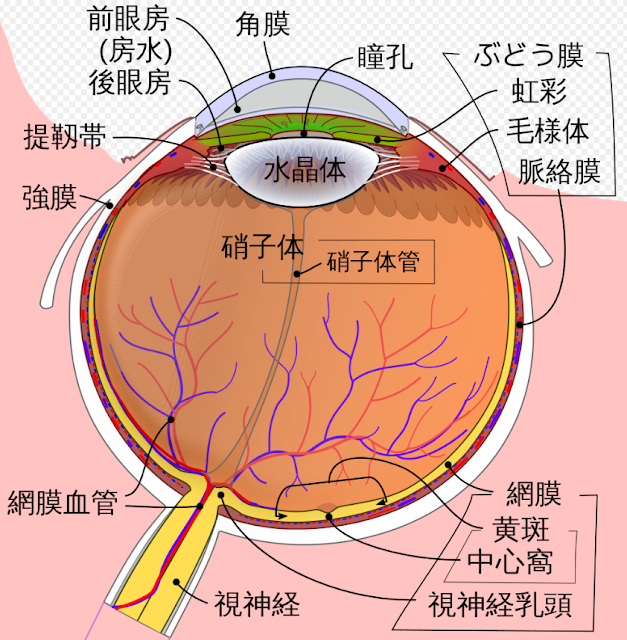17節 ティタン神族 Titans
Cronus
devouring one of his children
ロドス島の巨像 Colossus of Rhodes
タイタニック Royal Mail Ship Titanic
タイタニック Royal Mail Ship Titanic
タイタニック Royal Mail Ship Titanic
タイタニック Royal Mail Ship Titanic
タイタニック Royal Mail Ship Titanic
タイタニック Royal
Mail Ship Titanic
タイタニック Royal Mail Ship Titanic
タイタニック Royal Mail Ship Titanic
タイタニック Royal Mail Ship Titanic
タイタニック Royal Mail Ship Titanic
タイタニック Titanic 1997年(平成9年)
ガイア Gaea (大地 the
Earth)
ガイア Gaea (大地 the Earth)
ギリシア神話Greek mythologyでは、ガイアGaea (古代ギリシア語Ancient Greekの詩的な形poetical form、「土地land」または「地球earth」) は地球の擬人化personification of the Earthであり、ギリシアの原始的な神々Greek primordial deitiesの1人である。
In
Greek mythology, Gaia (from Ancient Greek, a poetical form of, "land"
or "earth") is the personification of the Earth and one of the Greek primordial
deities.
ガイアGaeaは、すべての生命all lifeの先祖代々の母親ancestral motherであり、時には単為生殖parthenogenicである。
Gaia
is the ancestral mother—sometimes parthenogenic—of all life.
Uranus
and the Dance of the Stars
ガイアGaeaはウラノス Uranus(空sky)の母motherであり、その性的結合sexual unionからティタン神族 Titans(彼ら自身は多くのオリンピアの神々Olympian godsの両親parents)、キュクロペスCyclopes、そして巨人Giantsを産んだ。
She
is the mother of Uranus (the sky), from whose sexual union she bore the Titans
(themselves parents of many of the Olympian gods), the Cyclopes, and the
Giants;
ポントスPontus(海sea)と同様に、ガイアGaeaはその結合から原始的な海の神々primordial sea godsを産んだ。
as
well as of Pontus (the sea), from whose union she bore the primordial sea gods.
ローマの神々Roman pantheonにおけるガイアGaeaの同等神equivalentはテラTerraであった。
Her
equivalent in the Roman pantheon was Terra.
タイタンの堕落 The Fall of the Titans
ティタン神族 Titans
ティタン女神 Titanesses
ギリシア神話Greek mythologyでは、ティタン神族Titansはオリュンポス以前の神々pre-Olympian
godsであった。
In
Greek mythology, the Titans were the pre-Olympian gods.
ヘシオドスHesiodの神統記Theogonyによると、彼らは原始的な両親primordial parentsであるウラノスUranus(空Sky)とガイアGaea(地球Earth)の12人の子供twelve childrenであり、
6人の男性のティタン神族six male Titans
クロノスCronus、オケアノスOceanus、イアペトスIapetus、ヒュペリオンHyperion、コイオスCoeus、クレイオス(クリオス)Crius、
6人の女性のティタン神族six female Titans(ティタネスTitanesses)
レアRhea、テテュスTethys、ポイベPhoebe、テミスThemis、ムネモシュネMnemosyne、テイアTheiaである。
クロノスCronusに石stoneを包んだおくるみを贈呈するレアRhea
Rhea presenting Cronus with the stone wrapped
in swaddling bands
クロノスCronusは姉older sisterのレアRheaと交配し、ゼウスZeus、ハデスHades、ポセイドンPoseidon、ヘスティアHestia、デメテルDemeter、ヘラHeraの6人の兄弟six
siblingsであるオリュンポスの神々Olympiansの第一世代first generationを産んだ。
Cronus
mated with his older sister Rhea, who then bore the first generation of
Olympians: the six siblings Zeus, Hades, Poseidon, Hestia, Demeter, and Hera.
ヘリオス Helios
プロメテウスPrometheus、ヘリオスHelios、レトLetoなどのティタン神族Titansの特定の子孫Certain descendantsは、ティタン神族Titansと呼ばれることもある。
Certain
descendants of the Titans, such as Prometheus, Helios, and Leto, are sometimes
also called Titans.
ティタン神族Titansはかつての神々former godsであり、オリュンポスの神々the Olympiansに先立つ神々の世代generation of godsであった。
The
Titans were the former gods: the generation of gods preceding the Olympians.
タイタンの堕落 The Fall of the Titans
ティタン神族Titansはギリシアの継承神話Greek succession mythの一部partとして打倒され、クロノスCronusが父fatherウラノスUranus(空Sky)から権力を掌握seized powerし、仲間のティタン神族fellow Titansと共に宇宙を支配ruled the cosmosした後、「ティタノマキアthe Titanomachy」と呼ばれる10年間の戦争ten-year
warで敗北defeatedし、神々の支配的なパンテオンruling pantheon of godsとして置き換えられたことを物語っている。
They
were overthrown as part of the Greek succession myth, which tells how Cronus
seized power from his father Uranus and ruled the cosmos with his fellow Titans
before being in turn defeated and replaced as the ruling pantheon of gods by
Zeus and the Olympians in a ten-year war called "the Titanomachy".
この戦争の結果result of this war、敗北したティタン神族vanquished Titansは上界upper worldから追放banishedされ、タルタロスTartarusの警備下under guardで投獄されたheld imprisonedが、一部のティタン神族Titansは自由のままでいることが許されたwere allowed to remain freeようである。
As
a result of this war, the vanquished Titans were banished from the upper world
and held imprisoned under guard in Tartarus, although apparently some Titans
were allowed to remain free.
クロノス Cronus (サトゥルヌス Saturn)
クロノス Cronus (サトゥルヌス Saturn)
ウラノスUranus(空Sky)とガイアGaea(地球Earth)との息子son。
彼らの子供childrenたちの中で最も賢いのがティタン神族Titan godsとティタン女神族Titan goddessesで、クロノスCronusは彼らの王Kingとなった。
彼について最もよく知られている物語によれば、母mother・ガイアGaeaは彼に、彼女が百手巨人たちmonstrous giants with one hundred arms・ヘカトンケイレスHecatoncheiresとキュクロペスCyclopesを産もうとするとウラノスUranusが彼らを胎内、すなわち地中(タルタロスTartarus)に押し戻してしまうので、苦しくて仕方がないと訴えたという。
The
Mutilation of Uranus by Saturn (Cronus)
彼女はクロノスCronusに金剛の鎌を与え、彼はそれを用いて、ウラノスUranusが次に彼女の上にのしかかったときに彼を襲い、その男根を切断し、それを背後に投げ捨てた。
その血の滴りが復讐の女神goddess of revenge・エリニュエスErinyes(Furies)、巨人族giants・ギガンテスGigantes、そして、トネリコの木の精たちnymphs of the ash tree・メリアイMeliaeになった。
クロノスCronusはウラノスUranusに代わって支配者となったが、すぐに父fatherに劣らず狂暴になった。
Cronus
devouring one of his children
彼は百手巨人たちmonstrous giants with one hundred arms・ヘカトンケイレスHecatoncheiresやキュクロペスCyclopesを再び地中(タルタロスTartarus)に監禁し、クロノスCronusが父fatherウラノスUranusを退位abdicateさせたように彼もまた子供childrenたちの1人によって退位abdicateさせられるであろうと警告されて、子供childrenたちが生まれる度にそれを飲み込んだswallow。
妻wife・レアRheaは、ティタン女神族Titan goddessesの1人で彼の姉妹sisterでもあったが、ヘスティアHestia、デメテルDemeter、ヘラHera、ハデスHade、ポセイドンPoseidon、ゼウスZeusを次々に産んだ。
クロノスCronusはそれらの子childrenをすべて逃さず飲み込んだswallowが、ゼウスZeusだけは母motherのレアRheaから祖母grandmotherのガイアGaeaに預けられた。
クロノスCronusに石stoneを包んだおくるみを贈呈するレアRhea
Rhea presenting Cronus with the stone wrapped
in swaddling bands
そしてレアRheaがゼウスZeusの代わりに大きな石big stoneを産着(うぶぎ)clothes for a newborn babyでくるんで夫husbandクロノスCronusに渡すと、夫husbandクロノスCronusはそれを我が子his own childと思って飲み込んだswallow。
ゼウスZeusはひそかにクレタ島Creteのディクテ山Mount
Dikte(あるいはイデ山Mount Ida)で、ニンフたちnymphsによって牝山羊she-goat・アマルティアAmaltheaの乳milkで育てられた。
クレテスCuretesは楯を槍で叩いて、赤ん坊の泣き声baby cryingがクロノスCronusに聞こえないようにした。
ゼウスZeuはやがて大洋の女神ocean goddess・メティスMetisと結婚marriageし、彼女を説得してクロノスCronusに催吐薬Emeticを与えさせ、その結果クロノスCronusは他の5人の子供たちfive
childrenを吐き出したvomit。
タイタンの堕落 The Fall of the Titans
それに続いてクロノスCronus対ゼウスZeusたちの10年に渡る長い戦争・ティタノマキアthe Titanomachyが始まったが、結局ゼウスZeusに解放された百手巨人たち・ヘカトンケイレスHecatoncheiresやキュクロペスCyclopesの助力を得てゼウスZeusを中心とするクロノスCronusの子供childrenたちが勝ち、クロノスCronusはゼウスZeusに位を譲った。
クロノスCronusはイアペトスIapetusや他のティタン神族Titan godsもろともタルタロスTartarusの深みに投げ込まれ、百手巨人たちmonstrous
giants with one hundred arms・ヘカトンケイレスHecatoncheiresが彼らの見張り役watchcmanを命じられた。
子供childrenたちを吐き出すvomit前にクロノスCronuは、ゼウスZeusの代わりに飲み込まされてswallowいた石stoneを吐き出したvomit。
その石stoneは大地の中心すなわち臍を印すものとしてデルポイDelphiに置かれた。
Saturn
in the guise of a horse being suckled by the nymph Philyra
クロノスCronus ピリュラPhilyra ケイロンChiron
ケイロン Chironとアキレウス Achilles Chiron
and Achilles.
黄金時代 Golden
Age ヘシオドスHesiodの 『労働と日々Works and Days』
幸福の島 Fortunate
Isles (エリュシオン Elysium)
別の言い伝えによれば、クロノスCronusは冷酷な暴君ではなく恵み深い支配者であって、幸福な黄金時代Golden Ageを統治したという。
退位のあと、彼は西方の海に浮かぶ「幸福の島Fortunate Isles(エリュシオンElysium)」に行ってそこの支配者となった。
幸福な時代の統治者という一面を、クロノスCronusは、彼と同一視されているローマ神話Roman mythologyの神God・サトゥルヌスSaturnと共有している。
ギリシア人Greeksの中には誤ってクロノスCronusの名を「時」を表す語・クロノスchronusと関連づけ、彼を鎌を持った老人の姿で「時の始祖」として描写する者もいた。
クロノスCronusの物語で最も古いものは、ヘシオドスHesiodによって 『神統記Theogony』 に語られたものである。
レア Rhea
レア Rhea
レアRheaは、古代ギリシアの宗教ancient Greek religionとギリシア神話Greek mythologyの母なる女神mother goddessであり、地球の女神earth goddessガイアGaeaと空の神sky godウラノスUranusの娘Titaness daughterであり、彼自身はガイアGaeaの息子sonである。
Rhea
is a mother goddess in ancient Greek religion and Greek mythology, the Titaness
daughter of the earth goddess Gaia and the sky god Uranus, himself a son of Gaia.
レアRheaは彼女の配偶者consortでもあったクロノスCronusの姉older sisterであり、五長five eldestのオリュンポスの神々Olympian godsヘスティアHestia、デメテルDemeter、ヘラHera、ポセイドンPoseidon、ゼウスZeus、冥界の王king of the UnderworldハデスHadesの母motherである。
She
is the older sister of Cronus, who was also her consort, and the mother of the
five eldest Olympian gods Hestia, Demeter, Hera, Poseidon and Zeus, and the
king of the Underworld Hades.
Cronus
devouring one of his children
しかし、クロノスCronusは、自分の前にいた父親のようにlike his father was before him、自分の子供の一人one of his childrenに打倒overthrownされる運命destinedにあることを知ったので、レアRheaが産んだbore子供childrenたちを、生まれるとすぐに飲み込んだswallowed。
But
Cronus learnt that he was destined to be overthrown by one of his children like
his father was before him, so he swallowed all the children Rhea bore as soon
as they were born.
クロノスCronusに石stoneを包んだおくるみを贈呈するレアRhea
Rhea presenting Cronus with the stone wrapped
in swaddling bands
レアRheaが6人目の最後の子供sixth
and final childゼウスZeusを産んだとき、彼女は彼を追い払ってクレタ島Creteに隠し、代わりにクロノスCronusに飲み込むための岩rock to swallowを与え、父親の支配his father's ruleに挑戦し、残りの兄弟the rest of his siblingsを救出する末の息子youngest sonを救った。
When
Rhea had her sixth and final child, Zeus, she spirited him away and hid him in
Crete, giving Cronus a rock to swallow instead, thus saving her youngest son
who would go on to challenge his father's rule and rescue the rest of his
siblings.
オリュンポスの神々 Olympian gods
ゼウスZeusがクロノスCronusを倒し、オリュンポスの神々Olympian godsが権力の座に就いた後、レアRheaはオリュンポス山Mount Olympusの小物minor figureになるために撤退し、もはや神々の女王queen of the godsではなく、神話における彼女の主要な役割her major part in mythologyがすでに演じられているので、彼女の子供たち、特にゼウスZeusを支えているsupporting。
Following
Zeus' defeat of Cronus and the rise of the Olympian gods into power, Rhea
withdraws to become a minor figure on Mount Olympus, no longer a queen of the
gods but still supporting of her children and particularly Zeus, as her major
part in mythology is already played.
それにもかかわらず、レアRheaは新しいオリュンポス時代new Olympian eraにいくつかの小さな役割と神話minor roles and mythsを持っている。
Despite
that, she has some minor roles and myths in the new Olympian era;
Hades abducting Persephone
ペルセポネPersephoneがハデスHadesに誘拐abductedされた後、レアRheaはゼウスZeusによってデメテルDemeterに送られ、ペロプスの神話myth of Pelopsでは、彼が殺された後に不幸な若者を生き返らせた。
after
Persephone was abducted by Hades, Rhea was sent to Demeter by Zeus, while in
the myth of Pelops, she brings back the unfortunate youth to life after he was
slain.
彼女はまた、孫grandsonのアポロンApolloの誕生birthにも出席した。
She
also attended the birth of her grandson Apollo.
オリュムポスの十二神 the
Twelve Olympian gods
初期の伝承では、レアRheaは「神々の母the mother of gods」として知られており、したがって、同様の機能similar functionsを持つガイアGaea(地球Earth)とキュベレCybeleと強く結びついている。
In
early traditions, she is known as "the mother of gods" and therefore
is strongly associated with Gaia and Cybele, who have similar functions.
古典ギリシア人classical GreeksはレアRheaをオリュンポスの神々や女神the Olympian gods and goddessesの母motherと見なした。
The
classical Greeks saw her as the mother of the Olympian gods and goddesses.
ローマ人The RomansはレアRheaをマグナ・マテルMagna Mater(彼らの姿のキュベレCybele)と女神オプスGoddess Opsと同一視した。
The
Romans identified her with Magna Mater (their form of Cybele), and the Goddess
Ops.
ヘリオス Helios (ソル Sol)
ヘリオス Helios (ソル Sol)
古代ギリシアancient Greekの宗教religionと神話mythologyでは、ヘリオスHeliosは太陽の神the god of the Sun(太陽神Solar deity)であり擬人化personificationされている。
In
ancient Greek religion and mythology, Helios is the god and personification of
the Sun (Solar deity).
彼の名前もラテン語でヘリウスHeliusと呼ばれ、しばしばヒュペリオンHyperion(「上の方the one above」)とパエトンPhaethon(「輝く者the shining」)という形容辞epithetsが与えられる。
His
name is also Latinized as Helius, and he is often given the epithets Hyperion
("the one above") and Phaethon ("the shining").
ヘリオス Helios (ソル Sol)
ヘリオスHeliosはしばしば芸術artにおいて、輝く王冠radiant crownをかぶり、戦車horse-drawn chariotを空を駆け抜けて描かれてdepictedいる。
Helios
is often depicted in art with a radiant crown and driving a horse-drawn chariot
through the sky.
ヘリオスHeliosは誓いの守護者guardian of oathsであり、視覚の神god of sightでもあった。
He
was a guardian of oaths and also the god of sight.
アポロン Apollo
ヘリオスHeliosは古典ギリシアClassical Greeceでは比較的重要でない神relatively minor deityだったが、ローマ時代Roman periodのいくつかの主要な太陽神major solar divinities、特にアポロンApolloとソルSolとの同一視identificationのおかげで、彼の崇拝worshipは古代後期late antiquityにより顕著prominentになった。
Though
Helios was a relatively minor deity in Classical Greece, his worship grew more
prominent in late antiquity thanks to his identification with several major
solar divinities of the Roman period, particularly Apollo and Sol.
セレネ Selene (ルナ Luna)
宗派の会議conference of sectariansを主宰presidingする背教者ユリアヌスJulian the Apostate
ローマ皇帝Roman EmperorユリアヌスJulianは、ヘリオスHeliosを西暦4世紀4th century ADの伝統的なローマの宗教的実践Roman religious practicesの短命の復活short-lived revivalの中心神格central divinityにした。
The
Roman Emperor Julian made Helios the central divinity of his short-lived
revival of traditional Roman religious practices in the 4th century AD.
エオス Eos (アウロラ Aurora)
ヘリオスHeliosは、ギリシア神話Greek mythology、詩poetry、文学literatureのいくつかの作品several worksで際立っており、ティタン神族TitansのヒュペリオンHyperionとテイアTheiaの息子sonであり、女神セレネgoddesses Selene(月the Moon)とエオスEos(夜明けthe Dawn)の兄弟brotherとして記述describedされることがよくある。
Helios
figures prominently in several works of Greek mythology, poetry, and
literature, in which he is often described as the son of the Titans Hyperion
and Theia and brother of the goddesses Selene (the Moon) and Eos (the Dawn).
Phaethon
in the chariot of the Sun
ギリシア神話Greek mythologyにおけるヘリオスHeliosの最も有名な役割most notable roleは、彼の父親fatherに好意favourを求めた彼の死すべき息子mortal sonパエトンPhaethonの物語storyである。
Helios'
most notable role in Greek mythology is the story of his mortal son Phaethon
who asked his father for a favour;
ヘリオスHeliosは同意したが、その後、パエトンPhaethonは4頭の馬の燃え盛る馬車four-horse
fiery chariotを1日空を横断across the skiesする特権privilegeを求めた。
Helios
agreed, but then Phaethon asked for the privilege to drive his four-horse fiery
chariot across the skies for a single day.
ヘリオスHeliosは息子sonにこの選択choiceに対して何度も何度もagain and again警告warnedし、彼以外の他の神other godがもたらすことができないような旅の危険性dangers of such a journeyを彼に説明explainingしたが、パエトンPhaethonは抑止deterするのが難しく、ヘリオスHeliosは彼に手綱を渡すhand the reinsことを余儀なくされた。
Although
Helios warned his son again and again against this choice, explaining to him
the dangers of such a journey that no other god but him was capable to bring about,
Phaethon was hard to deter, and thus Helios was forced to hand him the reins.
Fall
of Phaethon
予想通り、その乗車は悲惨で、ゼウスZeusは救いを超えて地球を燃やしたり凍らせたりするburning or freezing the earthのを阻止stopするために、パエトンPhaethonを稲妻の1つでwith one of his lightning bolts襲ったstruck
the youth。
As
expected, the ride was disastrous and Zeus struck the youth with one of his
lightning bolts to stop him from burning or freezing the earth beyond
salvation.
この神話myth以外にも、ヘリオスHeliosは時折他の登場人物の神話myths of other charactersに登場したり、誓いを目撃witnessing oathsしたり、他の神々や人間other gods and mortalsと交流したりした。
Other
than this myth, Helios occasionally appears in myths of other characters,
witnessing oaths or interacting with other gods and mortals.
The
companions of Odysseus rob the cattle of Helios
ホメロスの叙事詩Homeric epicsでは、ヘリオスHeliosの最も注目すべき役割は、オデュッセウスOdysseusの部下menが彼の警告warningsにもかかわらず、神がヘリオスHeliosの神聖な島sacred islandであるトリナキエ島Thrinaciaで飼っていたヘリオスHeliosの神聖な牛sacred cattleを不謹慎にも殺して食べるオデュッセイアthe OdysseyでヘリオスHeliosが演じるものである。
In
the Homeric epics, his most notable role is the one he plays in the Odyssey,
where Odysseus' men despite his warnings impiously kill and eat his sacred
cattle the god kept at Thrinacia, his sacred island.
彼らの悪行misdeedを知らされたヘリオスHeliosは怒りin wrath、ゼウスZeusに自分を不当に扱った者those who wronged himを罰するpunishよう求め、ゼウスZeusはそれに同意して雷撃で彼らの船を叩きstrikes their ship with a thunderbolt、神の牛を傷つけず、生きることを許されたallowed to live唯一のオデュッセウスOdysseus自身を除いて全員を殺したkilling everyone。
Once
informed of their misdeed, Helios in wrath asks Zeus to punish those who
wronged him, and Zeus agreeing strikes their ship with a thunderbolt, killing
everyone, except for Odysseus himself, the only one who had not harmed the
god's cattle, and was allowed to live.
その後、ヘリオスHeliosは旅の途中でオデュッセウスOdysseusを悩ませなくなる。
After
that, Helios troubles Odysseus no more in his journey.
Vulcan
surprises Venus and Mars
太陽としての彼の立場his position as the sunのために、彼はすべてを見る証人an all-seeing witnessであると信じられていたので、しばしば誓いの中で呼び出されたinvoked in oaths。
Due
to his position as the sun, he was believed to be an all-seeing witness, and
thus was often invoked in oaths.
ロドス島 island of Rhodes コリントス Corinth
古代ancient
times、彼は古代ギリシアancient Greeceのいくつかの場所で崇拝worshippedされていたが、彼の主要な信仰の中心地major cult centersはロドス島island of Rhodesであり、その中で彼は守護神patron god、コリントスCorinthと大コリントス地方greater Corinthia regionであった。
In
ancient times he was worshipped in several places of ancient Greece, though his
major cult centers were the island of Rhodes, of which he was patron god,
Corinth and the greater Corinthia region.
ロドス島の巨像 Colossus of Rhodes
ロドス島の巨像the Colossus
of Rhodes、神の巨大な像gigantic statue of the godは、地震earthquakeで破壊されるまでロドスの港port of Rhodesを飾っていた。
The
Colossus of Rhodes, a gigantic statue of the god, adorned the port of Rhodes
until it was destroyed in an earthquake, thereupon it was not built again.
Phaethon
asks his father for the chariot
パエトンPhaethon
パエトンPhaethonは、ギリシア神話Greek mythologyのオケアニスOceanidであるクリュメネClymeneと太陽神sun-godヘリオスHeliosの息子sonであった。
Phaethon
was the son of the Oceanid Clymene and the sun-god Helios in Greek mythology.
ほとんどの著者で、パエトンPhaethonはヘリオスHeliosの息子sonであり、彼の親子関係his parentageを確認したいという願望から、東の太陽神の宮殿sun-god's palaceに旅行する。
In
most authors, Phaethon is the son of Helios, and out of desire to have his
parentage confirmed, travels to the sun-god's palace in the east.
そこでパエトンPhaethonは父親fatherに認められ、一日だけ戦車chariotを駆る特権privilegeをヘリオスHeliosに求める。
There
he is recognised by his father, and asks him for the privilege to drive his
chariot for a single day.
Phaethon
in the chariot of the Sun
Phaeton
Driving the Chariot of the Sun
ヘリオスHeliosの熱烈な警告fervent warningsと、天体の旅celestial journeyで直面するであろう数多くの危険numerous dangersを数え、馬を制御できるcan control the horsesのは自分だけだとパエトンPhaethonに思い起こさせようとしたにもかかわらず、少年は思いとどまらずis not dissuaded、考えを変えないdoes not change his mind。
Despite
Helios' fervent warnings and attempts to talk him out of it, counting the
numerous dangers he would face in his celestial journey and reminding Phaethon
that only he can control the horses, the boy is not dissuaded and does not
change his mind.
その後、彼は戦車の手綱を取るtake the chariot's reinsことを許される。
He
is then allowed to take the chariot's reins;
彼の乗り心地は悲惨disastrousで、馬horsesをしっかりと掴むことができない。
his
ride is disastrous, as he cannot keep a firm grip on the horses.
その結果、彼は戦車chariotを地球に近づけすぎて燃やしburning it、遠くに離れすぎて凍らせるfreezing it。
As
a result, he drives the chariot too close to the earth, burning it, and too far
from it, freezing it.
Fall
of Phaethon
結局、空の星々stars in the skyから地球そのものthe earth itselfまで、多くの苦情many complaintsの後、ゼウスZeusはパエトンPhaethonを稲妻の1つでwith
one of his lightning bolts攻撃strikesし、彼を即座に殺したkilling him instantly。
In
the end, after many complaints, from the stars in the sky to the earth itself,
Zeus strikes Phaethon with one of his lightning bolts, killing him instantly.
エリダノス川 the
river Eridanus アテナイ Athens
The
Heliades
パエトンPhaethonの死体はエリダノス川the river Eridanusに落ち、彼の姉妹sistersヘリアデスHeliadesは彼を嘆き悲しむmournときに黒いポプラの木black poplar treesに変わった。
His
dead body falls into the river Eridanus, and his sisters the Heliades are
turned to black poplar trees as they mourn him.
クリュティエ Clytie
クリュティエ Clytie
クリュティエClytie(「栄光あるglorious」または「名声renowned」を意味meaningする)は、ギリシア神話Greek mythologyのティタン神族Titans・オケアノスOceanusとテテュスTethysの娘daughterである水のニンフwater nymphであった。
Clytie
(meaning "glorious" or "renowned") was a water nymph,
daughter of the Titans Oceanus and Tethys in Greek mythology.
クリュティエClytieは3,000人のオケアニデスOceanidsの一人であり、ポタモイPotamoi(川の神々river-gods)の姉妹sisterであった。
She
was one of the 3,000 Oceanids, thus sister to the Potamoi (river-gods).
Clytie
Transformed into a Sunflower
クリュティエClytieは太陽の神god of the sunヘリオスHeliosを虚しく愛していたが、愛の女神the goddess of loveアプロディテAphroditeに影響されて、ヘリオスHeliosは、別の女性、レウコトエ王女princess
LeucothoeのためにクリュティエClytieを捨てた。
Clytia
loved the god of the sun Helios in vain, but he left her for another woman, the
princess Leucothoe, under the influence of Aphrodite, the goddess of love.
怒りangerと恨みbitternessの中で、クリュティエClytieはレウコトエ王女princess
Leucothoeの父親fatherに彼らの不倫affairを明かし、ペルシア王King of PersiaがレウコトエLeucothoeを生き埋めにしたburied her aliveので間接的に彼女の運命doomを引き起こした。
In
anger and bitterness, she revealed their affair to the girl's father,
indirectly causing her doom as the king buried her alive.
ヘリオトロープ heliotrope (向日性の草木)の花
これはヘリオスHeliosをクリュティエClytieに取り戻すことができず、彼女は地面から彼を愛おしそうに見つめたままにされた。
This
failed to win Helios back to her, and she was left lovingly staring at him from
the ground;
やがてクリュティエClytieは太陽Sunを見つめる紫色の花violet flower、ヘリオトロープheliotropeに変身した。
eventually
she turned into a heliotrope, a violet flower that gazes at the Sun.
クリュティエの物語Clytie's storyは、オウィディウスの物語詩Ovid's narrative poem 『変身物語Metamorphoses』 から大部分が知られており、完全に保存fully preservedされているが、他の短い記述other brief accountsや他の作家other authorsからの彼女への言及referencesも残っている。
Clytie's
story is mostly known from and fully preserved in Ovid's narrative poem
Metamorphoses, though other brief accounts and references to her from other
authors survive as well.
セレネ Selene (ルナ Luna)
セレネ Selene (ルナ Luna)
古代ギリシア神話ancient Greek mythologyと宗教religionでは、セレネSelene(月Moon)は女神goddessであり、月の擬人化personification of the Moonである。
In
ancient Greek mythology and religion, Selene (meaning "Moon") is the
goddess and the personification of the Moon.
メネMeneとしても知られるセレネSeleneは、伝統的にtraditionallyティタン神族TitansのヒュペリオンHyperionとテイアTheiaの娘daughterであり、太陽神sun godヘリオスHeliosと夜明けの女神dawn goddessエオスEosの妹sisterである。
Also
known as Mene, she is traditionally the daughter of the Titans Hyperion and
Theia, and sister of the sun god Helios and the dawn goddess Eos.
セレネSeleneは月馬車moon chariotを駆りて天空を渡るacross the heavens。
She
drives her moon chariot across the heavens.
パン Pan セレネ Selene
いくつかの恋人は、ゼウスZeus、パンPan、そして死すべきエンデュミオンEndymionを含む様々な神話various mythsでセレネSeleneに帰されています。
Several
lovers are attributed to her in various myths, including Zeus, Pan, and the
mortal Endymion.
中世時代post-classical timesには、セレネSeleneはしばしばアルテミスArtemisと同一視され、兄brotherのヘリオスHeliosがアポロンApolloと同一視された。
In
post-classical times, Selene was often identified with Artemis, much as her
brother, Helios, was identified with Apollo.
ヘカテ Hecate (トリウィア Trivia)
セレネSeleneとアルテミスArtemisもヘカテHecateと関係があり、3人とも月moonと月の女神lunar goddessesと見なされていたが、セレネSeleneだけが月そのものMoon itselfの擬人化personificationと見なされていた。
Selene
and Artemis were also associated with Hecate and all three were regarded as
moon and lunar goddesses, but only Selene was regarded as the personification
of the Moon itself.
セレネSeleneのローマの同等神Roman equivalentはルナLunaである。
Her
Roman equivalent is Luna.
エリス Elis
Selene
and Endymion
エンデュミオン Endymion
ゼウスZeusの息子son・アエトリオスAethliusと、アイオロスAeolusの娘daughter・カリュケCalyceとの息子son。
エンデュミオンEndymionには3人の息子sonsたち、アイトロスAetolus、パイオンPaeon、エペイオスEpeiusがあった。
エンデュミオンEndymionは通常エリスElisの王Kingとされ、オリュムピアOlympiaからクレタ人Cretanの王King・クリュメノスClymenusを追い払って、オリュムピアOlympiaを自分の領土に加えたと言われる。
エンデュミオンEndymionは息子sonsたちに競走foot raceさせて勝った者に王座throneを譲ることとし、エペイオスEpeiusがその競走foot
raceに勝った。
Selene and Endymion
月の女神lunar goddess・セレネSeleneはエンデュミオンEndymionに恋し、彼の50人の娘daughterたちを産んだ。
その後、セレネSeleneはエンデュミオンEndymionがいつかは死ななければならないという考えに耐え切れず、エンデュミオンEndymionを永遠の眠りlive forever in sleepにつかせた。
その時から、エンデュミオンEndymionはカリアCariaのラトモス山Mount Latmus(一説によれば、そこが彼の故郷だという)の洞穴caveの中で、若く美しいまま眠り続けることとなった。
他の説では、ゼウスZeusがエンデュミオンEndymionの願いを聞き入れて、エンデュミオンEndymionを洞穴caveの中で、老いることなく永遠に眠り続けるようにしたという。
ラトモス山Mount Latmus近くのカリアCariaのヘラクレイア市Heracleiaの人々は、エンデュミオンEndymionのためにその地に神殿を建てた。
しかしながらエリスElisでは、エンデュミオンEndymionが永遠に眠り続けているという物語は知られていなかった。
エンデュミオンEndymionの墓がオリュムピアOlympiaにあったからである。
エオス Eos (アウロラ Aurora)
エオス Eos (アウロラ Aurora)
古代ギリシア神話ancient Greek mythologyと宗教religionでは、エオスEos (曙dawn) は夜明けの女神goddess of the dawnであり擬人化personificationされており、毎朝オケアノス川the river Oceanusの端edgeにある彼女の家her homeから起きて光lightを届け、夜nightを散らした。
In
ancient Greek mythology and religion, Eos is the goddess and personification of
the dawn, who rose each morning from her home at the edge of the river Oceanus
to deliver light and disperse the night.
ギリシア文学Greek literatureでは、エオスEosは太陽神sun godヘリオスHeliosと月の女神moon goddessセレネSeleneの妹sisterで、ティタン神族TitansのヒュペリオンHyperionとテイアTheiaの娘daughterとして描かれています。
In
Greek literature, Eos is presented as a daughter of the Titans Hyperion and
Theia, the sister of the sun god Helios and the moon goddess Selene.
Eos
in front of the chariot of the Sun
毎日、エオスEosは二頭立ての戦車two-horse chariotを駆って、新しい日の夜明けthe breaking of the new dayと兄の到着brother's arrivalを告げる。
Each
day she drives her two-horse chariot, heralding the breaking of the new day and
her brother's arrival.
したがって、ホメロスの叙事詩Homeric epicsにおける女神goddessの最も一般的な叙事詩most common epithetは、主に夜明けdawnと早朝early morningに関連付けられていたが、時にはエオスEosはヘリオスHeliosの旅の全期間the entire duration of his journeyにわたってヘリオスHeliosに同行accompanyし、夕暮れ時during duskにも見られた。
Thus,
her most common epithet of the goddess in the Homeric epics is although
primarily associated with the dawn and early morning, sometimes Eos would
accompany Helios for the entire duration of his journey, and thus she is even seen
during dusk.
Aurora
Taking Leave of Tithonus
エオスEosは死すべき人間mortal menと何度か恋に落ちfell in love with、男の神々male godsが死すべき人間mortal womenにしたように彼らを誘拐abductした。
Eos
fell in love with mortal men several times, and would abduct them in similar
manner to how male gods did mortal women.
エオスEosの最も注目すべき死すべき恋人Her most notable mortal loverはトロイアの王子Trojan princeティトノスTithonusであり、エオスEosは不死不滅の贈り物the gift of immortalityを確保したが、永遠の若さeternal youthは保証しなかったため、彼は永遠に死ぬことなく老化したaging without dying for an eternity。
Her
most notable mortal lover is the Trojan prince Tithonus, for whom she ensured
the gift of immortality, but not eternal youth, leading to him aging without
dying for an eternity.
Cephalus and Aurore
Cephalus and Aurore
別の物語では、エオスEosは彼の意志に反してagainst his willアテナイAthensのケパロスCephalusを運び去ったcarried offが、エオスEosが彼女を彼に侮辱するdenigrated前に、ケパロスCephalusは熱心に彼の妻の元に戻ることを望んでいたwished to be returned to his wifeので、最終的に彼を手放しeventually let him go、カップルは別れを告げたleading to the couple parting ways。
In
another story, she carried off the Athenian Cephalus against his will, but
eventually let him go for he ardently wished to be returned to his wife, though
not before she denigrated her to him, leading to the couple parting ways.
オーロラauroraは、天体の極域近辺に見られる大気の発光現象である。
極光(きょっこう)polar lightsまたは観測される極域により、北極north pole寄りなら北極光northern lights、南極South Pole寄りなら南極光southern lightsともいう。
Eos
and Tithonus
ティトノス Tithonus
トロイア王King of Troy・ラオメドンLaomedonと(いくつかの説によれば)ニンフnymphのストリュモStrymoとの息子son。
曙の女神goddess of the dawn・エオスEosは美青年beautiful young man・ティトノスTithonusに一目惚れし、夫husbandとするため彼を連れ去って、最東端にあるエチオピアEthiopiaのオケアノスOceanus川岸の彼女の宮殿palaceで一緒に暮らした。
エオスEosはトロイアの王家royal house of TroyからティトノスTithonusを恋人に迎え入れたと言われている。
Eos
is said to have taken Tithonus, from the royal house of Troy, to be her lover.
女神の死すべき恋人goddess' mortal loverの神話mythemeは古風なものarchaic oneである。
The
mytheme of the goddess' mortal lover is an archaic one;
ゼウスZeusの役割が挿入されたとき、苦いひねりa bitter twistが現れた:
when
a role for Zeus was inserted, a bitter twist appeared:
Eos
and Tithonus
アプロディテAphroditeへのホメロスの賛美歌Homeric Hymnによると、エオスEosがゼウスZeusにティトノスTithonusを不滅immortalにするように頼んだとき、彼女は彼に永遠の若さeternal
youthを与えるように頼むのを忘れた。
according
to the Homeric Hymn to Aphrodite, when Eos asked Zeus to make Tithonus
immortal, she forgot to ask that he be granted eternal youth.
しばらくしてエオスEosはティトノスTithonusが目に見えて老けていくのに気がついた。
ティトノスTithonusが徐々にしぼんで乾燥した殻になってしまうと、エオスEosは彼を自分の宮殿palaceの一室に閉じ込め、青銅の戸bronze doorで塞いだ。
ある言い伝えによれば、エオスEosはティトノスTithonusが絶えず鳴いて自分を喜ばせ、毎年古くなった皮を脱ぎ捨てられるように蝉cicada(テティクスtettix)に変えたということである。
メムノン Memnon
エオスEosはティトノスTithonusとの間に2人の息子sons・メムノンMemnonとエマティオンEmathionを産んだ。
そのうち、アラビアの王King of ArabiaとなったエマティオンEmathionは、ヘスペリデスHesperidesから黄金のりんごthe golden applesを奪おうとするヘラクレスHeracles妨げようとして、彼に殺された。
メムノンMemnonはエチオピア軍Ethiopian armyをトロイアTroyに連れて行き、ギリシア軍Greek armyと戦ってそこで死んだ。
Iris
and Jupiter
イリス Iris
古代ギリシアancient Greekの宗教religionと神話mythologyでは、イリスIris(虹rainbow)は、神々godsタウマスThaumasとオケアノスOceanusの娘daughter・エレクトラElectraとの娘daughterであり、虹rainbowの擬人化personificationと女神goddessであり、神々の使者messenger of the godsであり、オリュンポスの神々Olympian gods、特に女王QueenヘラHeraのしもべservantである。
In
ancient Greek religion and mythology, Iris (/ˈaɪrɪs/; EYE-riss; Greek: Ἶρις, translit.
Îris, lit. "rainbow,"[1] Ancient Greek: [îːris]) is a daughter of the
gods Thaumas and Electra, the personification and goddess of the rainbow and
messenger of the gods, a servant to the Olympians and especially Queen Hera.
ハルピュイアイ Harpies
ハルピュイアイHarpiesの姉elder sister。
天地heaven
and earthを結ぶ虹rainbowとして、疾速で知られ、遠くの土地や海底でも瞬く間に移動することが出来る。
そのためヘルメスHermesがゼウスZeusの腹心の部下right-hand manであるように、イリスIrisはヘラHeraの忠実な部下loyal subordinateとしてヘラHeraの伝令使messengerを務める。
ただし 『イリアスIliad』 においてはその区別は厳密ではなく、しばしばゼウスZeusのために伝令使messengerとして行動している。
Iris
Carrying the Water of the River Styx to Olympus for the Gods to Swear
ヘシオドスHesiodの 『神統記Theogony』 によれば、神々が互いに争ったり、嘘をついて欺こうとする者がいたとき、ゼウスZeusはイリスIrisを冥府underworldに派遣し、誓約の証人としてステュクスStyxの水Waterを汲んでこさせる。
『ホメロス風讃歌Homeric Hymns』 「アポロン讃歌To Apollo」 によると、女神GoddessレトLetoがデロス島the island of DelosでアポロンApolloを出産する際、アポロンApolloの祭壇と神域がデロス島the island of Delosで末永く栄え、アポロンApolloは他の誰よりもまずデロス島the island of
Delosに栄誉を与えることをステュクスStyxに誓った。
エイレイテュイア Eileithyia
しかしレトLetoはその日から9日間産褥に苦しんだため、レトLetoのもとに集まった女神goddessesたちはイリスIrisを天に遣わして出産の女神God of birthエイレイテュイアEileithyiaを連れて来させようとした。
エイレイテュイアEileithyiaは彼女をレトLetoのもとに行かせまいとする母ヘラHeraのもとで何も知らずにいたが、イリスIrisは女神goddessesたちに言い含められたようにエイレイテュイアEileithyiaをヘラHeraのいないところに呼び出して説得し、デロス島the island of Delosに連れて行った。
するとレトLetoはすぐさまアポロンApolloを出産したという。
オウィディウスOvidの 『変身物語Metamorphoses』 によると、ヘラHeraは、イリスIrisに命じて冥府underworldにあるヒュプノスHypnosの館に行って、ヒュプノスHypnosの息子sonモルペウスMorpheusを遣わしてケユクスCeyxの死んだことをアルキュオネAlcyoneの夢枕に立ってappear in her dream伝えた。
Morpheus
and Iris
イリスIrisは神々godsとの間で伝言messagesを運んだり、使い走りをしているrunning errandsいくつかの物語several
storiesに登場するが、彼女自身の神話unique mythology of her ownはない。
Iris
appears in several stories carrying messages from and to the gods or running
errands, but has no unique mythology of her own.
同様に、イリスIrisの歴史的な信仰historical cultと崇拝worshipのほとんどが、生き残った記録surviving recordsで証明されておらず、デロス島island of Delosから生き残ったsurviving痕跡tracesはほとんどない。
Similarly,
very little to none of a historical cult and worship of Iris is attested in
surviving records, with only few traces surviving from the island of Delos.
古代美術ancient artでは、イリスIrisは、使者の象徴symbol of the messengersであるカデュケウスcaduceusと神々のためのfor the gods水差しpitcher
of waterを運ぶcarrying翼のある若い女性winged young womanとして描かれている。
In
ancient art, Iris is depicted as a winged young woman carrying a caduceus, the
symbol of the messengers, and a pitcher of water for the gods.
ゼピュロス Zephyr
イリスIrisは伝統的に西風の神the god of the west windゼピュロスZephyrの妾consortであり、4人のアネモイAnemoi(風の神たちgods of the wind)の1人と見なされ、いくつかのバージョンではポトスPothos(エロスErosの息子son)の母motherである。
Iris
was traditionally seen as the consort of Zephyrus, the god of the west wind and
one of the four Anemoi, by whom she is the mother of Pothos in some versions.
Demeter rejoiced, for her daughter was by her
side.
娘daughterペルセポネPersephoneがハデスHadesに誘拐abductionされた後、農業の女神goddess of agricultureデメテルDemeterはエレウシスEleusisの神殿templeに引きこもり、大地earthを不毛barrenにし、大飢饉great famineを引き起こして人間を殺しkilled off mortals、その結果、神々への生け贄sacrifices to the godsはやめた。
Following
her daughter Persephone's abduction by Hades, the goddess of agriculture
Demeter withdrew to her temple in Eleusis and made the earth barren, causing a
great famine which killed off mortals, and as a result sacrifices to the gods
ceased.
ゼウスZeusはイリスIrisをデメテルDemeterに送り、他の神々the other godsに加わり、呪いを解くlift her curseよう呼びかけた。
Zeus
then sent Iris to Demeter, calling her to join the other gods and lift her
curse;
しかし、娘daughterが戻らなかったので、デメテルDemeterは説得されなかった。
but
as her daughter was not returned, Demeter was not persuaded.
ヘラクレスHeraclesによって解放されたプロメテウスPrometheus
ある物語では、レトLetoと彼女の子供childrenたちがゼウスZeusにプロメテウスPrometheusを苦しみtormentから解放releaseするよう懇願pleadedした後、ゼウスZeusはあきらめ、イリスIrisを派遣してヘラクレスHeraclesに不幸なunfortunateプロメテウスPrometheusを解放freeするよう命じた。
In
one narrative, after Leto and her children pleaded with Zeus to release
Prometheus from his torment, Zeus relented, and sent Iris to order Heracles to
free the unfortunate Prometheus.
Alcyone
and Ceyx transformed into Halcyons
ケユクスCeyxが難破船shipwreckで溺死drownedした後、ヘラHeraはイリスIrisに彼女の命令her ordersを睡眠の神god of sleepヒュプノスHypnosに伝えさせた。
After
Ceyx drowned in a shipwreck, Hera made Iris convey her orders to Hypnos, the
god of sleep.
Hypnos
and Thanatos: Sleep and His Half-Brother Death
イリスIrisは飛んで洞窟caveでヒュプノスHypnosを見つけ、ヘラHeraがケユクスCeyxの妻wifeアルキュオネAlcyoneに彼女の愛する人の死her loved one's deathを夢の中でin her dreams知らせてinformedほしいと願っているwishedことを彼に知らせたinformed。
Iris
flew and found him in his cave, and informed him that Hera wished for Ceyx's
wife, Alcyone, to be informed of her loved one's death in her dreams.
ヘラHeraの命令commandを遂行した後、イリスIrisはすぐに立ち去り、ヒュプノスHypnosの近くに長く立たず、彼の力が彼女を掴み、彼女をめまいと眠くさせた。
After
delivering Hera's command, Iris left immediately, not standing to be near
Hypnos for too long, for his powers took hold of her, and made her dizzy and
sleepy.
虹(にじ)Rainbowとは、水滴water droplets中の光lightの反射reflection、屈折refraction、分散dispersionによって生じる気象現象meteorological phenomenonである。
A
rainbow is a meteorological phenomenon that is caused by reflection, refraction
and dispersion of light in water droplets.
A
blue iris. A human eye. 虹彩(こうさい) Iris
虹彩(こうさい) Iris
虹彩(こうさい) Iris
菖蒲(あやめ)(しょうぶ) 綾目(あやめ) 文目(あやめ) Iris
キルケ Circe
キルケ Circe (「鷹hawk」を意味する)
太陽神the god of the sunヘリオスHeliosと大洋の女神ocean goddessペルセイスPerseisとの娘daughter。
コルキスColchis王KingアイエテスAeetesの姉妹sister。
アイエテス Aeetes
太陽神the sun-godヘリオスHeliosと大洋神ocean godオケアノスOceanusの娘daughterペルセイスPerseisとの息子sonで、キルケCirceとパシパエPasiphaeの兄弟brother、メデイアMedeaの父father。
アイエテスAeetesは黒海the Black Seaの南東端にあるコルキスの王a King of Colchisであった。
イアソン Jason とメデイア Medea
メデイア Medea
太陽神sun god・ヘリオスHeliosの息子sonであるコルキス王King of Colchis・アイエテスAeetesと、オケアノスOceanusの娘daughter・イデュイアIdyiaとの娘daughter。
イデュイアIdyiaの名はメデイアMedeaと同様、「巧妙な」「抜け目のない」を意味する。
メデイアMedeaは幼い頃より、叔母auntのキルケCirceに似て腕のいい魔女witchで、ヘカテHecateに心服していた。
ヘカテ Hecate (トリウィア Trivia)
ヘカテ Hecate (トリウィア Trivia)
ホメロスHomerの作品には登場しないが、ヘシオドスHesiodに称賛される地母神mother goddess。
ヘシオドスHesiodの故郷ボイオティアBoeotiaで尊ばれた。
両親parentsははっきりしない。
ヘシオドスHesiodによればコイオスCoeusとポイベPhoebeの娘daughterで、他のティタン神族TitansがタルタロスTartarusへ幽閉imprisonmentされたのちも一人ティタン神族Titansとしての尊厳を守った女神Goddessであるという。
A
goddess, probably Hecate (possibly Artemis), is depicted with a bow, dog and
twin torches.
ヘカテHecateは古代ギリシアの宗教ancient Greek religionと神話mythologyの女神goddessであり、ほとんどの場合、一対の松明a pair of torches、鍵key、ヘビsnakes、または犬dogsの同伴を持ち、後の時代later periodsには三重の形triple formで描かれているdepicted。
Hecate
is a goddess in ancient Greek religion and mythology, most often shown holding
a pair of torches, a key, snakes or accompanied by dogs and in later periods
depicted in triple form.
ヘカテ Hecate (トリウィア Trivia)
ヘカテHecateは十字路crossroads、入り口entrance-ways、夜night、光light、魔法magic、魔術witchcraft、月the Moon、薬草herbsや有毒植物poisonous plantsの知識knowledge、墓graves、幽霊ghosts、降霊術necromancy、黒魔術sorceryと様々に関連付けられている。
She
is variously associated with crossroads, entrance-ways, night, light, magic,
witchcraft, the Moon, knowledge of herbs and poisonous plants, graves, ghosts,
necromancy, and sorcery.
文学literatureにおけるヘカテHecateの最初の出現earliest appearanceは、紀元前8世紀のヘシオドスHesiodの神統記Theogonyで、空sky、大地earth、海seaに領域domainsを持つ偉大な名誉の女神goddess of great honourとしてであった。
Her
earliest appearance in literature was in Hesiod's Theogony in the 8th century
BCE as a goddess of great honour with domains in sky, earth, and sea.
ヘカテ Hecate (トリウィア Trivia)
ヘカテHecateの出身地place of originは学者scholarsによって議論debatedされているが、彼女はテッサリアThessalyの魔女witchesの間で人気のある信者popular followingsとラギナLaginaの小アジアAsia Minorのカリアのギリシア人Carian Greeksの間で重要な聖域important sanctuaryを持っていた。
Her
place of origin is debated by scholars, but she had popular followings amongst
the witches of Thessaly and an important sanctuary among the Carian Greeks of
Asia Minor in Lagina.
ヘカテHecateは、ゼウスZeus、ヘスティアHestia、ヘルメスHermes、アポロApolloと並んで、古代アテネancient Athensでオイコスoikos(家庭household)の保護者protectorとして崇拝worshippedされたいくつかの神々の1人one
of several deitiesであった。
Hecate
was one of several deities worshipped in ancient Athens as a protector of the
oikos (household), alongside Zeus, Hestia, Hermes, and Apollo.
ヘカテ Hecate (トリウィア Trivia)
カルデアの神託Chaldean Oracles(西暦2世紀から3世紀)のキリスト教後の著作post-Christian writingsでは、ヘカテHecateは地球earth、海sea、空skyに対する(いくつかの)支配権rulershipと、救い主Savior(ソテイラSoteira)、天使の母Mother of Angels、宇宙世界の魂Cosmic World Soulとしてのより普遍的な役割more universal roleも考慮regardedされていた。
In
the post-Christian writings of the Chaldean Oracles (2nd–3rd century CE) she
was also regarded with (some) rulership over earth, sea, and sky, as well as a
more universal role as Savior (Soteira), Mother of Angels and the Cosmic World
Soul.
ヘカテ Hecate (トリウィア Trivia)
ヘカテHecateの信仰cultの性質natureに関して、「ヘカテHecateはギリシアの多神教の中心centre of Greek polytheismにいるよりも、辺境fringesのほうにいる。
Regarding
the nature of her cult, it has been remarked, "she is more at home on the
fringes than in the centre of Greek polytheism.
本質的に曖昧ambivalentで多形性polymorphousで、ヘカテHecateは従来の境界conventional boundariesを跨いで定義を逃れているeludes definition。」
Intrinsically
ambivalent and polymorphous, she straddles conventional boundaries and eludes
definition."
ローマ人The Romansは、ダイアナDiana・アルテミスArtemisと共有sharesするトリビアの叙事詩epithet of TriviaでヘカテHecateを知っており、それぞれが旅行travelと十字路crossroadsの保護者protectorとしての役割rolesを担っていた(トリビアtrivia、「3つの方法three
ways」)。
The
Romans knew her by the epithet of Trivia, an epithet she shares with
Diana/Artemis, each in their roles as protector of travel and of the crossroads
(trivia, “three ways”).













